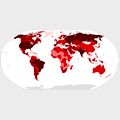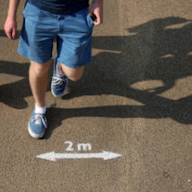Search results
Apr 4, 2024 · The virus that causes COVID-19 spreads mainly from person to person. It can spread from people who are infected but have no symptoms. When people with COVID-19 cough, sneeze, breathe, sing or talk, the virus carried on their breath can land on the faces of people nearby.
Mar 2, 2024 Apr 20, 2024. These early indicators represent a portion of national COVID-19 tests and emergency department visits. Wastewater information also provides early indicators of spread. Severity Indicators. Hospitalizations. Hospital Admissions. 5,615. (April 14 to April 20, 2024) Total Hospitalizations. 6,929,940.
The virus can spread from an infected person’s mouth or nose in small liquid particles when they cough, sneeze, speak, sing or breathe. These particles range from larger respiratory droplets to smaller aerosols.
Apr 9, 2024 · Updated Apr. 9, 2024. Español. Print. What is COVID-19? COVID-19 (coronavirus disease 2019) is a disease caused by a virus named SARS-CoV-2. It can be very contagious and spreads quickly. Over one million people have died from COVID-19 in the United States.
Aug 9, 2023 · Overview. COVID-19 is the disease caused by the SARS-CoV-2 coronavirus. It usually spreads between people in close contact. COVID-19 vaccines provide strong protection against severe illness and death. Although a person can still get COVID-19 after vaccination, they are more likely to have mild or no symptoms.
03 / 10 / 2023. Show More. What is the JHU CRC Now? The Johns Hopkins Coronavirus Resource Center established a new standard for infectious disease tracking by publicly providing pandemic data in near real time.
Apr 15, 2021 · SARS-CoV-2, the virus that causes COVID-19, is spread from person to person through respiratory droplets or particles when infected people cough, sneeze, talk or breathe. Most often,...











